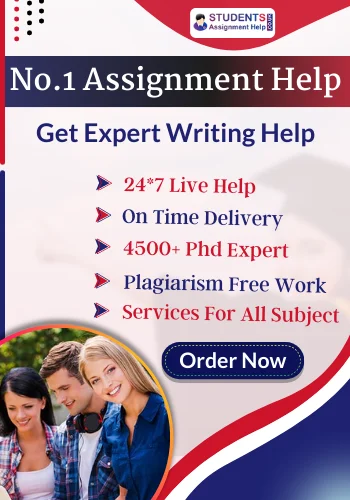- NAM4034 Fundamental skills for Nursing Written Care Plan CW1 Assignment Brief Academic Year 2025-26, Buckinghamshire New University (BNU)
- Unit 5006 Further Mathematics – Pearson BTEC Level 5 Diploma Assignment 2025-2026, Leeds City College
- BIT4213 Fundamental of Cryptography Individual Assignment 1 – Understanding Cryptographic Techniques
- WNI077 Nutrition and Digestion Graded Assignment 2 Brief : Access to HE Diploma – Health and Social Care
- FDY3003 Exploring the Social World Assignment Essay – Arden University UK
- Mechanical Engineering Assessment: Design and Development of an Aerodynamics Package
- 7CO04 Business Research in People Practice Learner Assessment Brief
- Fundamentals of Chemistry Assignment Brief Workbook Task 1 and Task 2
- Managing Information System Assignment – A Case Study on Amazon
- Unit 5 Furniture and Accessories in Interior Design Assignment – National Design Academy
- 6ENT2030 Geotechnical Design Assignment Brief – University of Hertfordshire
- Network and Security Assignment Project Report for Global Enterprises
- Unit 5011 Industrial Power Electronics and Storage Pearson BTEC Level 5 Assignment Brief
- NU7020 Leadership and Quality Improvement and Governance Assignment – Trinity College Dublin (TCD)
- BTEC Level 3 Business Unit 4: Managing an Event – Assessment Brief
- NBS8641 Data Analytics for Business Insights Assessment Brief Semester 1 2025-26
- Biological Data Driven Coursework Questions 2025-26 – Pharmaceutical Sciences
- CETM71 Computer Architectures and Network Assessment 2 – University of Sunderland
- Level 5 Associate Diploma Unit 5CO01 Organisational performance and culture in practice Learner Assessment Brief
- Quantitative Methods for Accounting and Finance Assignment Reports
Unit 3 Management of Human Resources Pearson BTEC Diploma Assignment Brief 2025-2026 – Lyceum Campus UK
| University | Lyceum Campus |
| Subject | Unit 3 Management of Human Resources Pearson |
Assignment Brief
| Programme Title | Pearson BTEC Higher National Diploma in Business |
| Student Name/ID Number | |
| Unit Number and Title | Unit 3 – Management of Human Resources |
| Academic Year | 2025-2026 |
| Unit Tutor | Ms. Anitha Siriwardana |
| Assignment Title | Sustainable HRM in the Digital Era: Designing and Applying a Workforce Action Plan to Recruit, Retain, and Develop Talent for Organisational Performance |
| Issue Date | 15.09.2025 |
| Submission Date | |
| Submission Format | |
| A written report with a maximum of 2000 words, uploaded electronically via the LMS. | |
Do You Need Assignment of This Question
Unit Learning Outcomes
LO1 Explain the impact of the role of HRM in creating sustainable organisational performance and contributing to business success
LO2 Produce a workforce action plan for recruiting and retaining talent to address skills shortages in an organisation
LO3 Examine how external and internal factors can affect HRM decision-making in relation to organisational development
LO4 Apply HRM practices in a work-related context for improving sustainable organisational performance.
Transferable skills and competencies developed
- Strategic & systems thinking
- Business acumen
- Data literacy & people analytics
- Labour-market research
- Project planning & execution
- Job design & competency modelling
- Assessment & selection design
- Onboarding & retention design
- Performance management & KPI setting
- Change management & organisational development
- Stakeholder communication & influencing
- Ethical, legal & DEI awareness
- Risk management & governance
- Professional writing & documentation
- Reflective practice & continuous improvement
Vocational scenario
You have been appointed HR Associate/Junior HR Business Partner in a medium-sized organisation facing digital-skills shortages and hard-to-fill vacancies. Turnover has risen, onboarding is inconsistent, and managers want clearer metrics to link HR practices to sustainable organisational performance. You will diagnose the situation, build a workforce action plan, and apply HRM practices to show measurable improvements, while evaluating external and internal influences on HR decision-making.
Assignment activity and guidance
Task 1 – HRM’s Contribution to Sustainable Performance
Write a report of max. 1200 words
- Explain the main areas of HRM and how each contributes to sustainable organisational performance. Use examples to justify your answer (P1).
- Review how the changing nature of organisations affects HR skills/knowledge (P2). Compare the above HRM areas in terms of their relative impact on sustainable performance. Conclude which mix best fits your scenario (M1).
- Examine how HRM must adapt to the modern organisation. Link to consequences for structures, roles, and policies (M2).
- Critically evaluate the strengths and weaknesses of your organisation’s current HRM as a foundation for a forthcoming workforce action plan (D1)
Task 2 – Workforce Action Plan for Recruitment & Retention
Develop a workforce action plan of max. 1200 words
- Create a workforce action plan that addresses skills needs, skills gaps, and hard-to-fill vacancies (P3), cover:
- Current state: roles, headcount, skills inventory, gaps (by team/role).
- Attraction & recruitment: sourcing channels (internal/external), inclusive job ads, employer branding, selection methods (validity/fairness/compliance).
- Retention & onboarding: structured onboarding, manager check-ins, coaching/mentoring, wellbeing, career pathways/CPD.
- KPIs & monitoring: time-to-hire, quality-of-hire, 90-day retention, offer-acceptance rate, onboarding completion, engagement pulse scores.
- Governance & risk: data protection, equal opportunity, accessibility.
- Devise the plan strategically, referencing the labour market. Show how market dynamics shape sourcing mix, salary/benefit positioning, internal mobility, and L&D build-versus-buy decisions (M3).
- Finalise your critical evaluation from task 1: now re-assess HRM strengths/weaknesses in relation to your plan. Argue how the plan creates a sustainable workforce, where trade-offs exist, and how you’ll mitigate risks. Provide a prioritised roadmap (D1).
Assignment activity and guidance
Task 3 – Factors Shaping HR Decision
Develop a PESTEL of max. 1000 words
- Investigate external and internal factors that affect HRM decision-making to support organisational development. Include a concise PESTLE and an internal drivers map for your scenario (P4).
- Discuss the key factors with relevant organisational examples, showing how each factor supports Organisational Development (M4).
- Evaluate and prioritise the most material factors for your organisation and make valid recommendations. Link each recommendation to an expected KPI shift and Organisational Development outcome (D2)
Task 4 – Applying HRM Practices in Context
Develop artefacts of max. 1000 words
- Apply HRM practices in a work-related context to demonstrate improvement to sustainable performance (P5). Produce and attach:
- Job Description & Person Specification (competency-based) for one priority role.
- Recruitment artefacts: inclusive job ad, shortlist rubric, structured interview guide with scoring criteria; note legal/ethical safeguards.
- Performance & reward: draft goals/KPIs for the role; outline a balanced reward approach (financial & non-financial) and a Continupus Professional Development pathway/mentoring plan; include wellbeing supports.
- Illustrate how these specific practices improve sustainable organisational performance. Map each practice to at least one KPI and Organisational Development levers (M5).
- Determine strengths & weaknesses of the applied HRM practices and make recommendations to improve sustainability (D3).
Recommended Resources
Please note that the resources listed are examples for you to use as a starting point in your research – the list is not definitive.
Recommended Resources
- Armstrong, M. and Taylor, S. (2023) Armstrong’s Handbook of Human Resource Management Practice. 16th Ed. London: Kogan Page.
- Leatherbarrow, C. and Fletcher, J. (2018) Introduction to Human Resource Management.
4th Ed. London: CIPD and Kogan Page.
- Marchington, M., Wilkinson, A., Donnelly, R. and Kynighou, A. (2020) Human Resource Management at Work: The Definitive Guide. 7th Ed. London: CIPD and Kogan Page.
- Torrington, D., Hall, L., Atkinson, C. and Taylor, S. (2020) Human Resource Management.
11th Ed. London: Pearson.
Buy Answer of This Assessment & Raise Your Grades
Learning Outcomes and Assessment Criteria
| Pass | Merit | Distinction |
| LO1 Explain the impact of the role of HRM in creating sustainable organisational performance and contributing to business success |
LO1 and LO2 D1 Critically evaluate the strengths and weaknesses of HRM in relation to creating a sustainable workforce action plan for recruiting and retaining talent. | |
| P1 Explain the main areas of HRM and their contribution to creating sustainable performance. P2 Review the effects of the changing nature of organisations on human resources skills and knowledge. | M1 Compare areas of HRM to create sustainable organisational performance. M2 Examine HRM in relation to the changing nature of the modern business organisation. | |
| LO2 Produce a workforce action plan for recruiting and retaining talent to address skills shortages in an organisation | ||
| P3 Create a workforce action plan that addresses skills needs, skills gaps and hard-to-fill vacancies for recruiting and retaining talent in an organisation. | M3 Devise a strategic workforce action plan for improving recruitment and retention in relation to the importance of the labour market. | |
| LO3 Examine how external and internal factors can affect | ||
| HRM decision-making in relation to organisational | ||
| development | ||
| P4 Investigate the external | M4 Discuss the key external | D2 Evaluate key factors |
| and internal factors that | and internal factors that affect | affecting HRM decision- |
| affect HRM decision- | HRM decision-making, using | making to make valid |
| making to support | relevant organisational | recommendations. |
| organisational | examples to illustrate how | |
| development. | they support organisational | |
| development. | ||
| LO4 Apply HRM practices in a work-related context for | ||
| improving sustainable organisational performance | ||
| P5 Apply HRM practices in a | M5 Illustrate how the | D3 Determine strengths and |
| work-related context, using | application of specific HRM | weaknesses of HRM practices to make |
| specific examples to | practices in a work-related | recommendations |
| demonstrate improvement | context can improve | for improving sustainable |
| to sustainable | sustainable organisational | organisational performance. |
| organisational | performance. | |
| performance. | ||
Are You Looking for Answer of This Assignment or Essay
Working on your Unit 3 Management of Human Resources Assignment for the Pearson BTEC Higher National Diploma in Business? Our professionals at Student Assignment Help UK provide expert guidance on HRM strategies, workforce planning, and sustainable talent management. Get 100% original, university-standard unit 3 human resource management solution from our Human Resource Management Assignment Help UK service and impress your tutors with a well-researched HR report.




